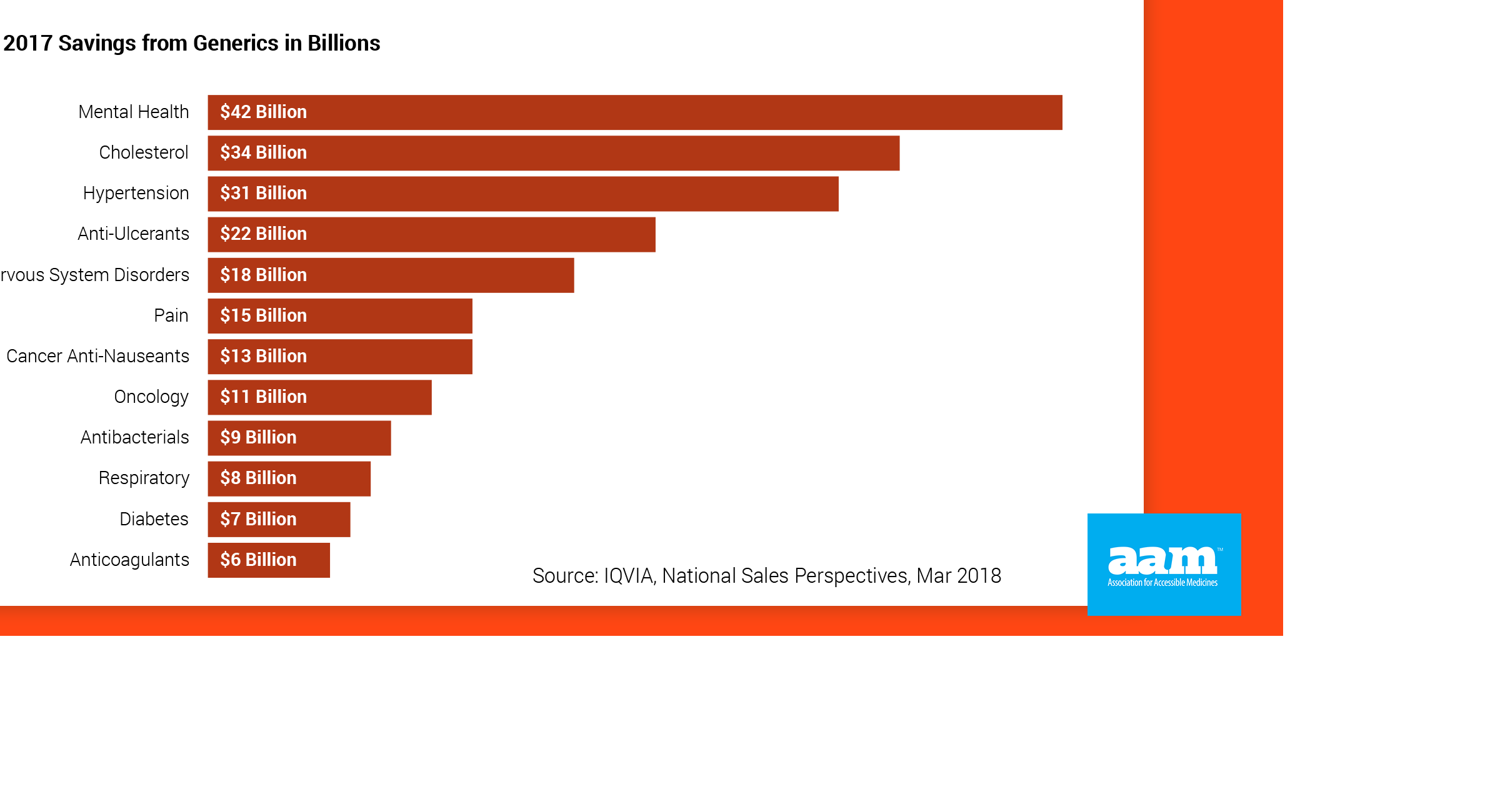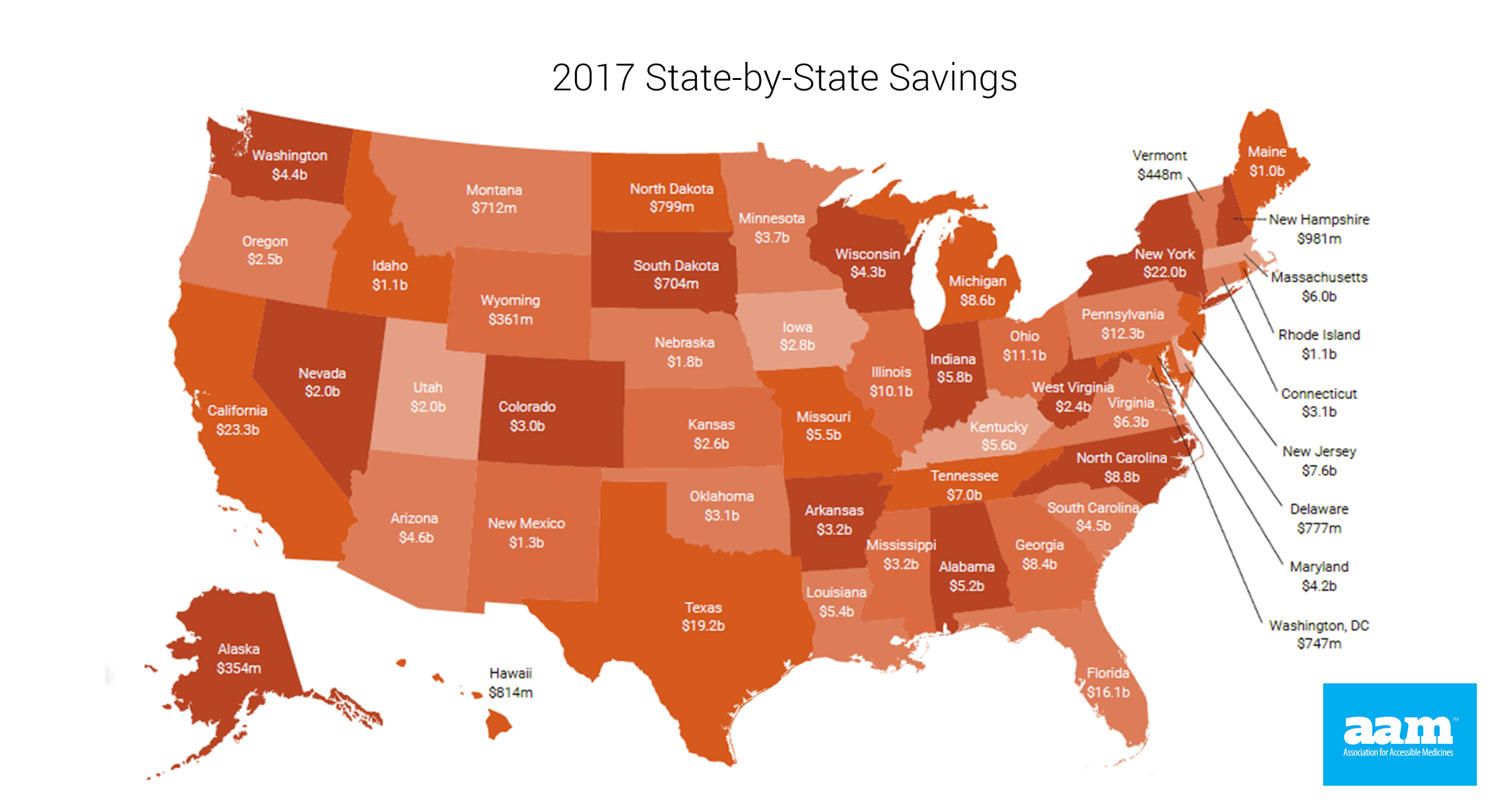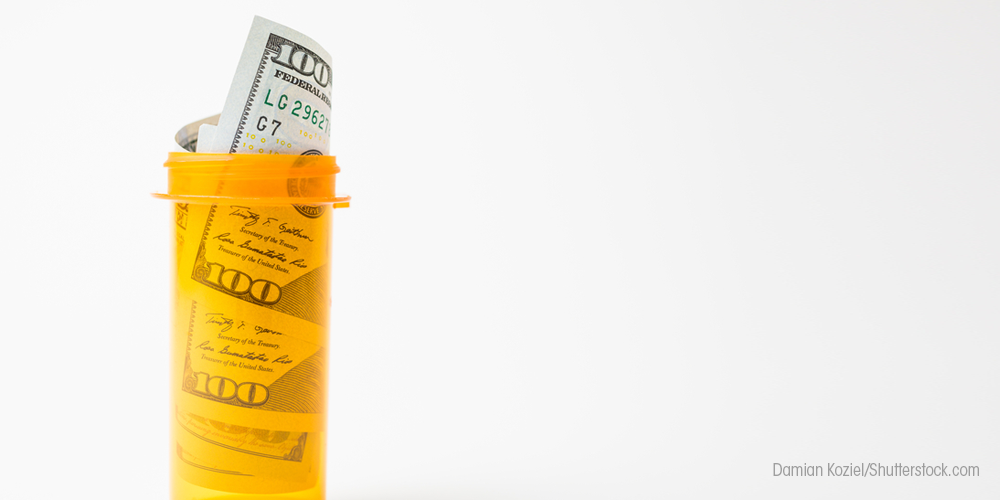A Look at the Year in Generics
The annual report on generic access and savings shows some impressive numbers for 2017.
2017 Savings by Treatment

2017 State-by-State Savings


Last year, generic drugs generated $265 billion in savings in the United States, with $6.06 as the average patient copay for a generic prescription. “The Generic Access and Savings Report in the United States 2018,” released by the Association for Accessible Medicines (AAM), found that 90% of generic prescriptions are filled at $20 or less and that generics account for nine out of every ten prescriptions filled in 2017.
“It’s absolutely spot on,” says Robert Frankil, RPh, president and owner of Sellersville Pharmacy, Inc., in Sellersville, PA. “Generics, for the most part, 19 out of 20 times, are going to deliver a quality product and savings to the consumer and the insurance company.”
Related article: Why Health Systems Are Making Their Own Generics
Other findings from the report include:
- Savings for Medicare amounted to $82.7 billion, or $1,952 per enrollee.
- Savings for Medicaid was $40.6 billion, or $568 per enrollee.
- Medicines used by older adults (ages 40 to 64 years old) and seniors accounted for 80% of the $265 billion savings generated.
- The average state saved $5.2 billion in 2017, ranging from $354 million in Alaska to $23.4 billion in California.
- Brand name drugs represent only 10% of prescriptions, but 77% of drug spending.
The top 10 generic drugs ranked by savings are: atorvastatin (Lipitor); ondansetron (Zofran); omeprazole (Prilosec); gabapentin (Neurontin); simvastatin (Zocor); rosuvastatin (Crestor); amlodipine (Norvasc); aripiprazole (Abilify); montelukast (Singulair); and quetiapine (Seroquel).
For the first time, the study breaks down total savings by patient condition. Patients with mental illness saved the most through generics-$48.4 billion-followed by patients with heart conditions ($47.6 billion); epilepsy ($17.3 billion); cancer ($10.1 billion); and diabetes ($7.8 billion). The tenth edition of the AAM report was produced by the IQVIA Institute for Human Data Science.
Price Deflation
Craig Burton, AAM vice president of policy, says there were no surprises about the impact of generics. “It really reiterates the value proposition. It is putting numbers to what people intuitively know about the value of generics,” he told Drug Topics.
While not a surprise due to the consolidation in the buying consortia, which has three main companies controlling 90% of the market, Burton says the report clearly showed price deflation.
“On the one hand, you have significant market penetration with 90% of all prescriptions filled by generics. Patients are benefitting. Payers are benefitting. Yet at the same time you have a historically high rate of price deflation on generics,” Burton says. “We’ve always had that. It’s the nature of the generic industry. But the trends we see over the last two years have been almost two years of solid, sustained, and steep price deflation.”
Frankil agrees, noting, “It used to be generics across the board were more profitable for pharmacies to dispense and that is being squashed down quite a bit. Sometimes I can actually make more money selling a brand drug.”
“I never would have dreamed 10 years ago that we’d be getting so much downward pressure on generics,” he adds.
In addition to market imbalance, the report, which also examines the biosimilars market, describes what it calls “anticompetitive abuses.”
“Some brand manufacturers are gaming regulations to attain unwarranted extensions of the market monopolies by keeping generic and biosimiliar competitors from developing and introducing lower-cost medicines,” the report states.
Related article: Why Generic Drug Prices Are Dropping
It also calls out federal and state lawmakers for not understanding differences between the generic and brand business models and enacting one-size-fits-all legislation and regulations that have “unintended and harmful outcomes.”
Burton says barriers need to be removed so more manufacturers can get into the market, adding that is also affecting the biosimilars market.
“The FDA has been making great progress in terms of approval. Today there are 11 approved biosimilars, which is great, but only three are on the market,” he says.